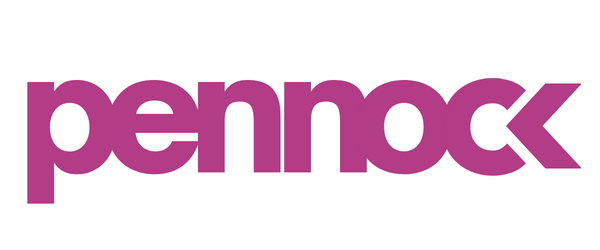Pennock Seeds | Unlocking Performance Max: Smarter Testing for Smarter Results
Google Performance Max (PMax) has become an indispensable tool for digital marketers aiming for growth. But how do you truly unlock its full potential and maximize your return on investment? It all comes down to a smarter testing strategy.
In a recent Pennock webinar, our expert Silpy Jha dove deep into navigating PMax, emphasizing that strategic testing and optimization are key to truly leveraging this powerful, AI-driven campaign type.
PMax: The Power of Google AI
At its core, PMax is designed to drive conversions by harnessing the full power of Google AI across the entire Google Ads inventory – from Search to Display, YouTube, Gmail, and Discover.
A fundamental principle of PMax is "garbage in, garbage out." This means the quality of your creative inputs (images, text, video assets) directly impacts the AI's ability to learn, adapt, and find optimal performance combinations. Providing high-quality, relevant assets is crucial for the AI to effectively find the best performing combinations and define optimal results.
PMax simplifies your advertising by giving you access to Google's vast network from a single campaign, making it easier to reach customers across various touchpoints and efficiently achieve your conversion goals. Google AI uses the assets you provide to identify high-performing combinations, ensuring your ads reach the right audience at the right time.
PMax Best Practices: Your Optimization Checklist
To ensure you're getting the most out of your PMax campaigns, Silpy provided a critical checklist of best practices:
Track Performance Carefully: PMax has limitations in direct reporting. Use Google Analytics 4 (GA4) to create segments and monitor user behavior on your landing pages, getting deeper insights into performance.
Optimize Your Product Feed: For shopping-focused PMax campaigns, a well-optimized and up-to-date product feed in Google Merchant Center (GMC) is non-negotiable. Ensure all products are eligible and free of warnings.
Allocate Sufficient Budget & Time: Google recommends a minimum daily budget of $70-$100 and running campaigns for at least six weeks without changes. This allows the AI sufficient time to learn and optimize efficiently, avoiding resets to the learning phase.
Use PMax with Other Campaigns: PMax often performs best when used in conjunction with other campaigns, such as branded search campaigns. Test their combined performance.
Exclude Branded Keywords (for specific tests): To truly gauge PMax's ability to acquire new audiences, run a test campaign that excludes your branded keywords. This prevents PMax from simply capturing searches your branded campaigns would already get.
Structure Asset Groups Effectively: Organize assets by product categories, use case, or different audience segments (e.g., age groups for skincare). Align creatives (headlines, descriptions, images) with specific themes and goals within each asset group for optimal AI learning.
Optimize Asset Groups Regularly: Continuously monitor asset performance. Pause underperforming assets and introduce new ones to keep the campaign fresh and performing optimally.
Choose Feed-Only or All Assets Wisely: Use "feed-only" if your primary goal is shopping. For broader campaigns leveraging the full Google inventory, all asset types are required.
Provide Relevant Audience Signals: Guide the AI by providing audience signals like customer lists and interest categories. This helps PMax find the ideal customer for your campaign.
Strategic Testing: Unlocking Deeper Insights
Beyond best practices, Silpy outlined several strategic tests to optimize PMax campaigns:
PMax vs. Standard Search Campaigns: Compare PMax against your standard search campaigns. PMax AI might uncover new search queries and audiences you're not currently targeting, assessing if it can complement or even outperform. Ensure consistent targeting settings (e.g., locations, goals) for a fair comparison.
PMax vs. Standard Shopping Campaigns: Test PMax's ability to optimize your product feed across the entire Google network. Compare ROAS, CPA, conversion value, and impression shares. Past tests have shown PMax shopping campaigns can deliver superior performance.
PMax with New Customer Acquisition Goal: Focus PMax specifically on acquiring new customers to increase market share and drive long-term growth. While often higher cost, new customers are essential for top-line revenue. Layer audience signals of likely new customers for refinement.
PMax Without Audience Signals vs. With Diverse Signals: This test examines the impact of audience signals. Running PMax without signals allows the AI to discover audiences independently, while diverse signals (customer lists, past purchasers, website visitors, custom audiences) guide the AI for improved conversion rates and efficiency.
Testing Different Asset Group Structures: Experiment with organizing asset groups by minimal signals versus layered audience signals or highly specific lookalike audiences. Broad targeting gives the AI more freedom, but testing different structures within different campaigns can yield better results.
Testing Different Conversion Goals: Beyond just primary conversion (e.g., purchase), test PMax campaigns optimized for secondary or micro-conversions (e.g., initiate checkout, add to cart). This helps the algorithm learn about other valuable customer behaviors, allowing for retargeting those audiences in different campaigns.
Key Takeaways for PMax Mastery
Structure Testing is Vital: Don't set it and forget it. Actively experiment and analyze your results.
Compare Against Standard Campaigns: Understand the strengths and weaknesses of each campaign type.
Leverage Audience Signals Strategically: Guide the AI effectively, but also test broad vs. customized signals.
Structure Assets Wisely: Organize assets for relevance and optimal campaign organization.
Align and Test Different Conversion Goals: Experiment to find what drives the best specific business outcomes.
As Silpy emphasized, Google's AI doesn't completely take everything you give it, but signals are crucial. It's always worth testing to see what performs best for your specific brand and goals.
